Germans are known for eating solid and hearty grub. There’s a reason they jokingly refer to themselves as Kartoffeln (potatoes) – no visit to the Bundesrepublik would be complete without a plate of sausage, sauerkraut and mash.
But delve further into the depths of German cuisine and your senses will be confronted by smells, tastes and sights you’ll soon regret politely accepting.
The Local has scoured least appetising aisles of the German diet to bring you the 10 foods most likely to make your stomach turn.
1. Mett – raw ground pork
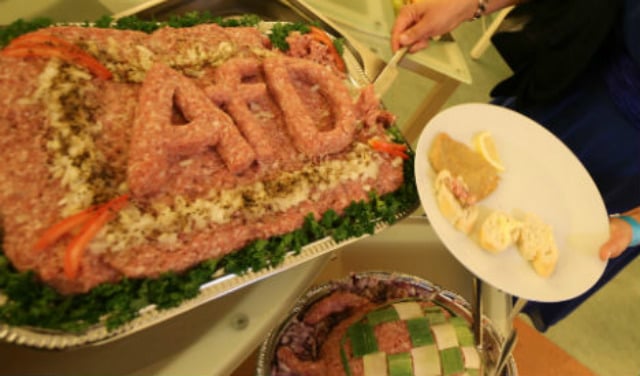
Mett is the way to celebrate at this Alternative for Germany (AfD) gathering back in 2016. Photo: DPA
On special occasions such as birthdays throughout Germany, the host could well bring out a glistening mound of pink meat, often shaped like a hedgehog.
But while you might expect them to fry up some burgers with it, they will instead slice up the spikey creature and start eating it as it is – raw.
Germans also like sculpting Mett into all sorts of different shapes. The Alternative for Germany political party made a huge plate of it with their initials on top after winning 14 percent at the Berlin state election.
Some Germans have even started serving Mett in the shape of a penis.
2. Labskaus – meat mix
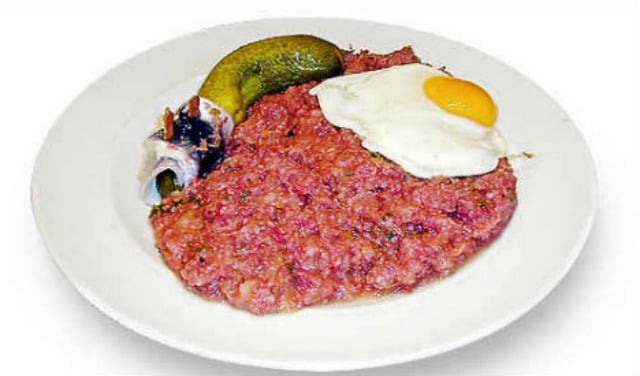
Can you eat that though? Photo: Wikimedia Commons / Horst Frank / Rainer Zenz
Talking about things that are worryingly pink and take up far too much of the plate, have you ever tasted Labskaus?
It’s made from ground beef, pickled beet root, onions and potatoes and was invented by desperate fishermen who needed to use ingredients that wouldn’t go off on their long journeys across the sea.
Despite the invention of vacuum packs, this dish remains strangely popular in northern Germany. Apparently they’ve inherited their ancestors stomachs, hardened to the churning North Sea.
3. Hofer Schwaaß/Gebackenes Blut – baked blood
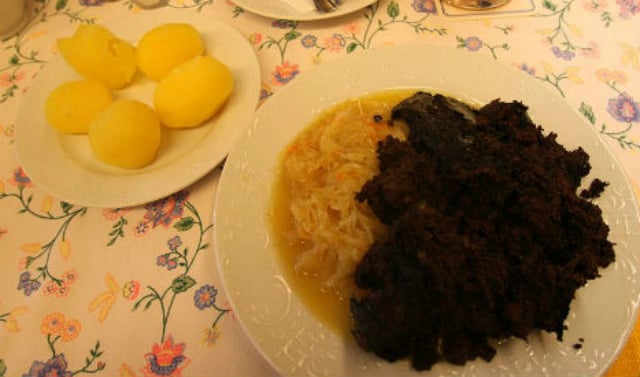
Baked blood with Sauerkraut and potatoes. Yum. Photo: Wikimedia Commons / Benreit
When the good people of Franconia want to quench their thirst for blood, they have the good manners to bake the claret fluid first. In fact Gebackenes Blut (baked blood), or so called Hofer Schwaaß, is a delicacy in the north Bavarian region.
When Franconians slaughter a pig they catch the blood in a tray, mix it with bacon, onion and old bread and put it in the oven for 45 minutes. they then serve it with – yes, you’ve guessed it – potatoes and cabbage.
4. Heringssalat – herring salad

Herring salad. Photo: Flickr / PIxelfänger
Herring salad is traditional to many of the Baltic countries. The base ingredient is salted herring.
Some German recipes even call for using a delightful concoction of herring sperm and vinegar.
So visitors to north Germany can perhaps count themselves lucky that they’ll only have to stomach a few mouthfuls of herring, mixed with beetroot, gherkins and mayonnaise before gratefully rubbing their bellies.
But if even this mixture is too much for much for your delicate stomach, avoid Christmas invites in the northern regions of Germany, where it is traditional to eat it on Christmas Eve.
5. Grünkohl – green cabbage
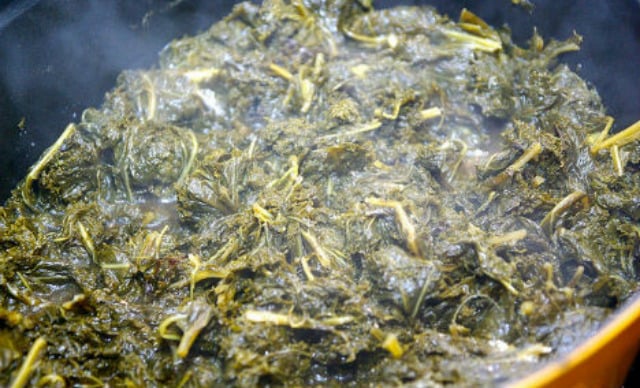
Dig in. Photo: Flickr / frankbehrens
While often served as a side dish, the sight of Grünkohl alone is enough to spoil your appetite.
Even next to one of those famous, golden-brown, German sausages, it still conjures up images of that night-out two months ago when you imbibed a little too much alcohol, with unintended consequences.
Initially, Grünkohl starts out as nothing but an innocent-looking kale plant until it’s picked apart, cooked, and mixed with stewed onions and often bacon, eventually turning into an odd-smelling mush.
Still, north Germans gobble it down without thinking twice.
6. Bremer Knipp – another meat mix
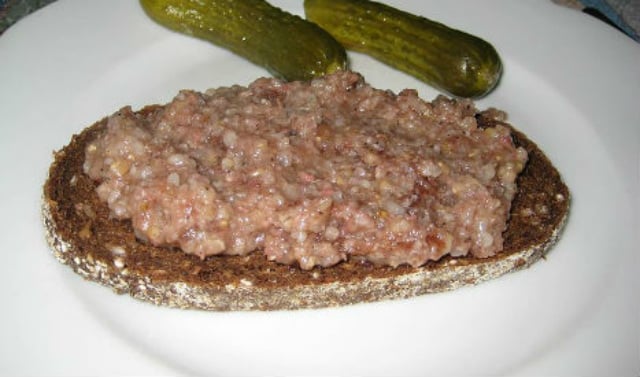
A Bremen delicacy. Photo: Wikimedia Commons / Gerd Fahrenhorst
A pattern seems to be emerging here. Frankly, we’re beginning to wonder if north Germans eat anything that doesn’t look like it has just been regurgitated by a seagull.
Traditional in Germany’s smallest city state of Bremen, Bremer Knipp is made from oat grout, pork or beef, allspice and other herbs.
It’s best served with the indispensable German potato – or, alternatively, apple sauce.
7. Schmalz – animal fat
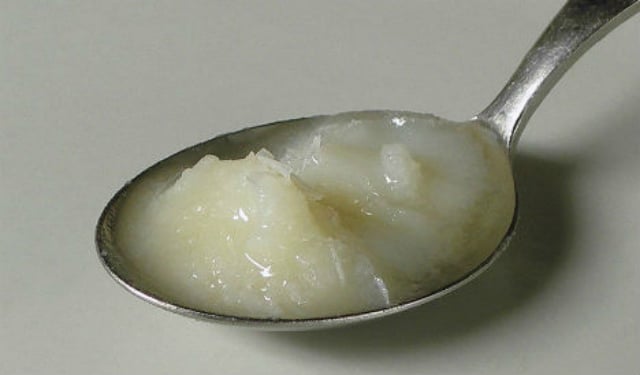
Duck Schmaltz. Photo: Wikimedia Commons / Rainer Zenz
If you take your kids to play in their first junior football match, you’ll almost certainly find a football mum among the parents who has made sandwiches for everyone.
After a long day of cheering on your child, you might hungrily unwrap the sandwich only to find a translucent, odd-smelling slime spread across the bread.
This slime is Schmalz, which is fat, often taken from pigs, that’s melted, mixed with onions and other ingredients and set to harden into a cream afterwards.
While you can find Schmalz in many German regions, Bavaria is particularly known for its Griebenschmalz, which is the same slimy substance with pork speck in it.
8. Zungenwurst – tongue sausage
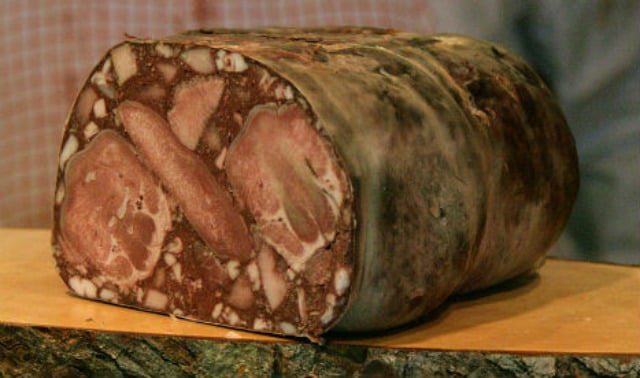
There’s tongue in that sausage. Photo: Wikimedia Commons / Tamorlan
If you’re brought up in Germany, you’re more or less compelled to eat huge amounts of bread for lunch every day, eventually forcing you to find ways of spicing up your Käsebrot (cheesebread).
Some Germans, bored with Salami, Schinken (ham) and co., had the bright idea of ripping out pigs’ tongues, mixing them with blood, onion and bacon and calling the whole thing Zungenwurst.
Zungenwurst is part of the German Blutwurst family, and among the variety of bloody sausages you can find across the Bundesrepublik, Thuringian Rotwurst is known to be the queen of them all.
9. Sülze – aspic
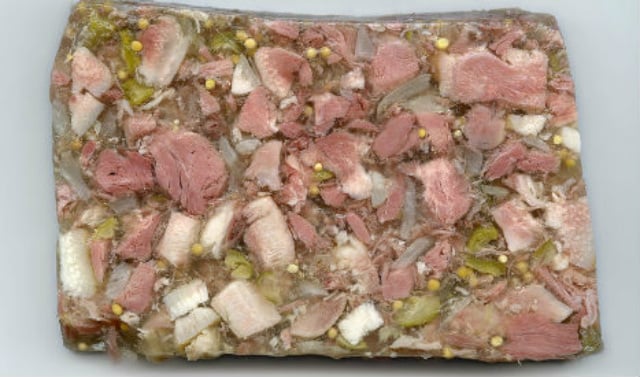
Trapped in aspic. Photo: Wikipedia Commons / Rainer Zenz
Even if two foods make for incredibly unlikely bed fellows, Germans find a way of making them inseparable by trapping them in Sülze (aspic).
To produce aspic, a cooled glass or metal jar is filled with seasoned liquid jelly, which is then cooled. As soon as a coat has formed on the liquid, little ice cold pieces of filling such as meat, fish, fruit, etc. are placed inside, the jar is then re-filled with jelly and finally put in a fridge until the whole substance hardens.
When walking through your grocery store in most regions of Germany, you’ll encounter pieces of pineapple and chicken stuck in big globs of this wobbly substance, either in jars or as vacuum-sealed slabs.
10. Soleier – pickled eggs
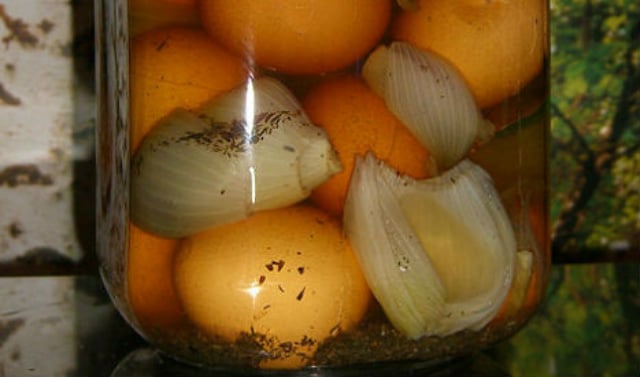
Eery eggs in a jar. Photo: Wikimedia Commons / Doktor Zion
You may walk into a friend’s basement looking for a beer on a Saturday evening and come across a wall-sized shelf stacked with glasses full of eggs.
But rather than breeding an army of chicks, your friend probably uses the mixture to keep the eggs from going off.
Germans like to pickle pretty much everything – which is why your local store is sure to have a whole aisle of pickled carrots, onions, tomatoes, and many more things.
If you want to still your ravenous pickle hunger, the Spreewald area in the state of Brandenburg just outside of Berlin is famously known for its excellent gherkin.
But beware – eating mass amounts of “Gewürzgurken” (pickled cucumbers) is often seen by Germans as a sign of pregnancy.

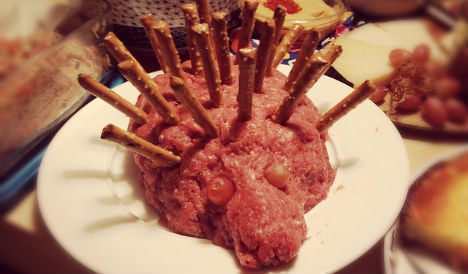

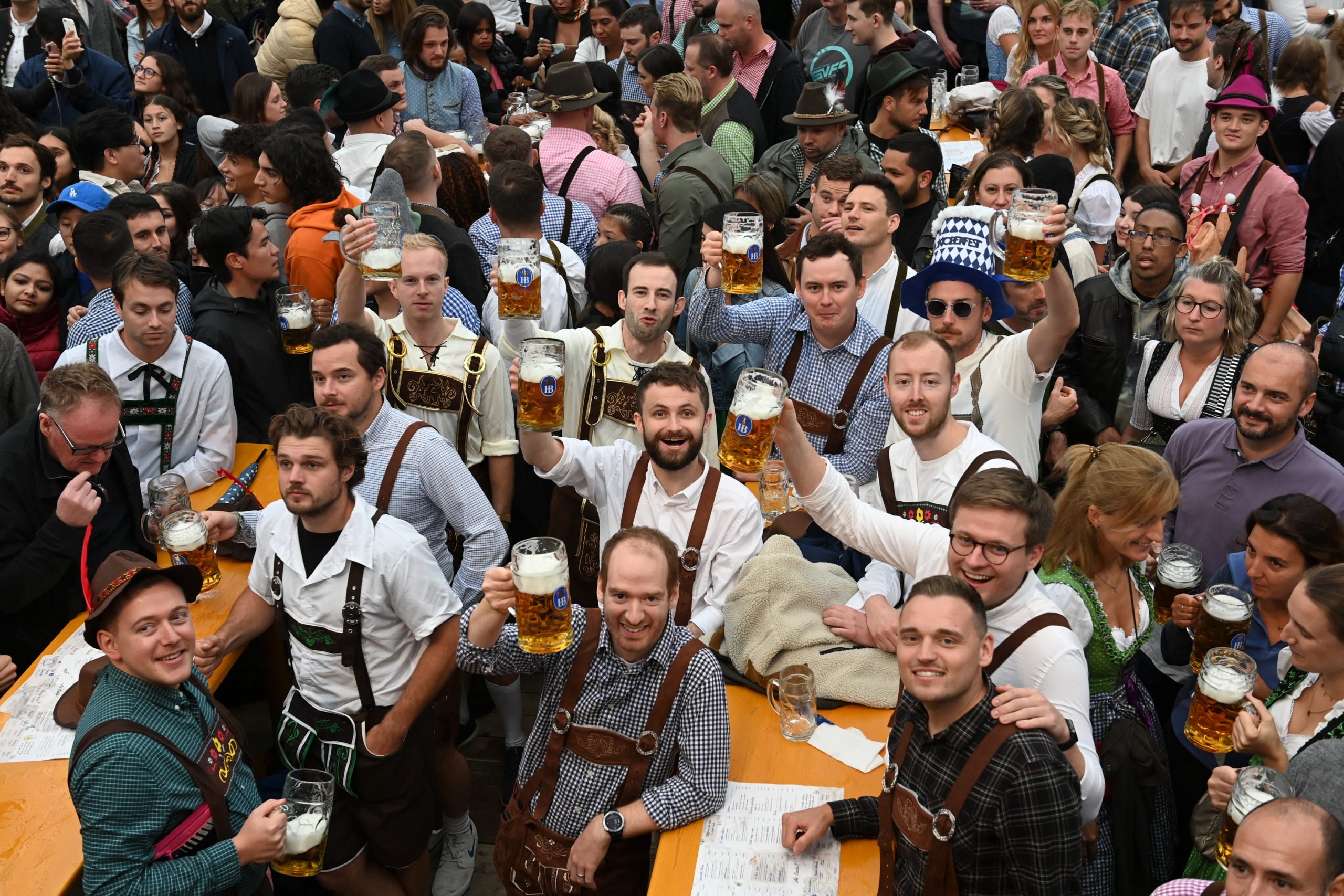
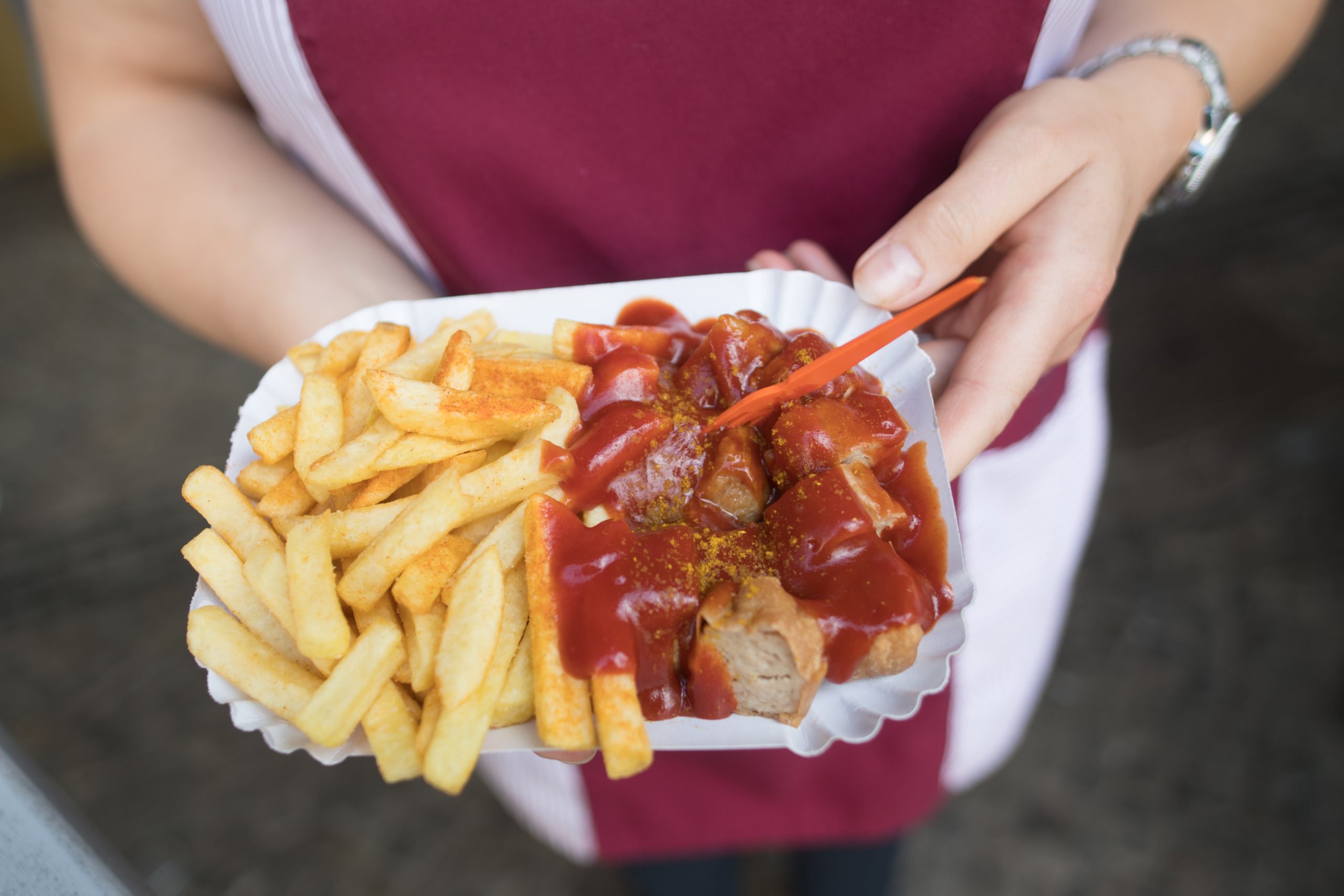
 Please whitelist us to continue reading.
Please whitelist us to continue reading.
Really? Some of these are real treats – but described in this way can turn anyone off from tasting them. Grünkohl is one of the examples in this article – way to go in describing one of the most healthy vegetables (considered to be a superfood) in the most unappetizing way possible!
One could not possibly like a dish made of legs torn off little lambs, thrown into a mix of wine, broth and vegetables and baked forever, right? Well, you just said good bye to slow cooked lamb shanks – one of the delicacies of American cuisine…
Grünkohl, Baked Blood, Pickled Eggs all good. Some of the others I haven’t tried, but Sülze? From the first time we saw it in a Supermarket we named it “sliced Barf” – I mean, just look at it! 🙂